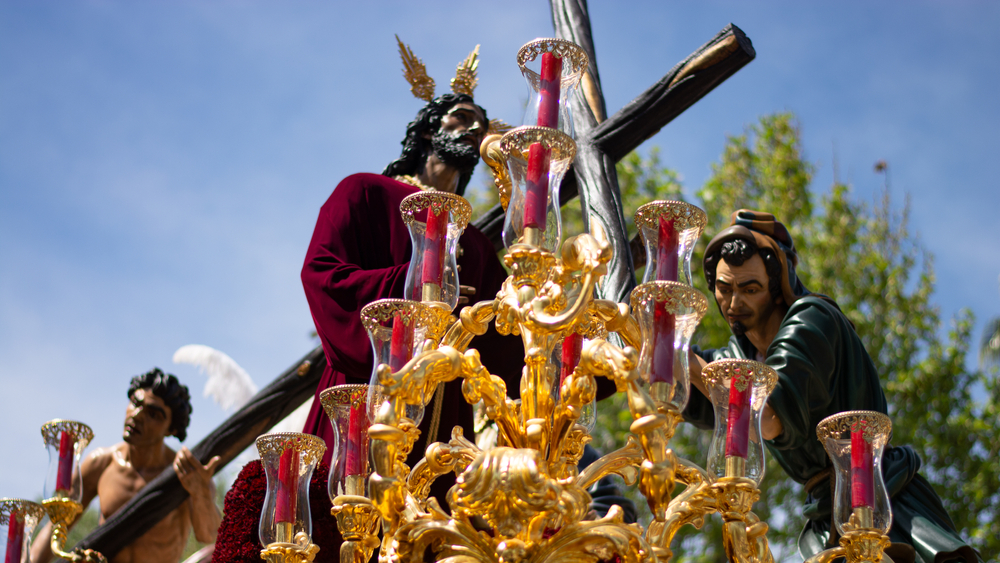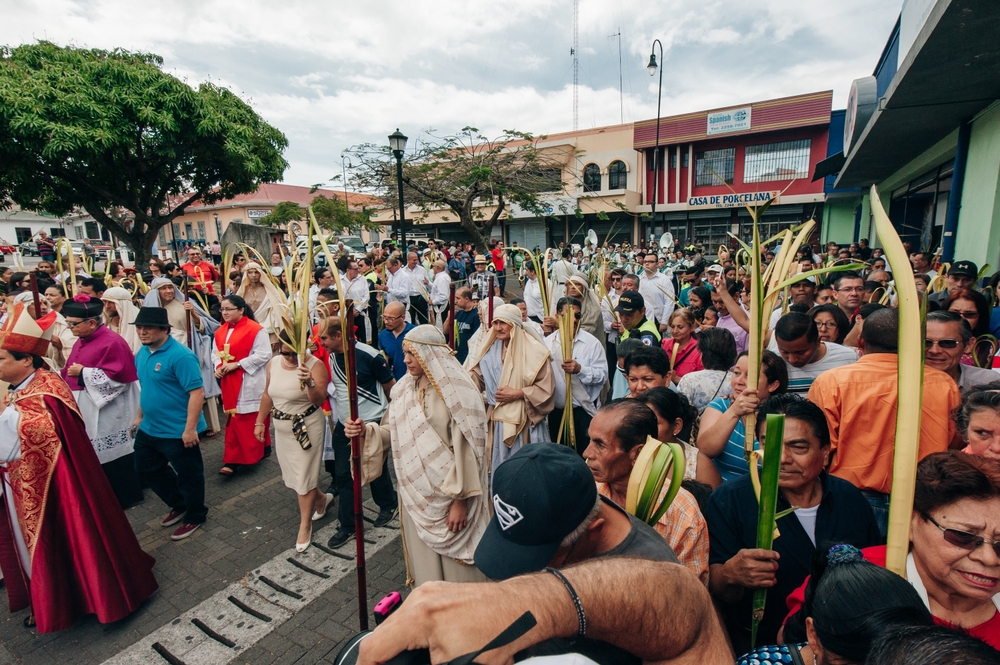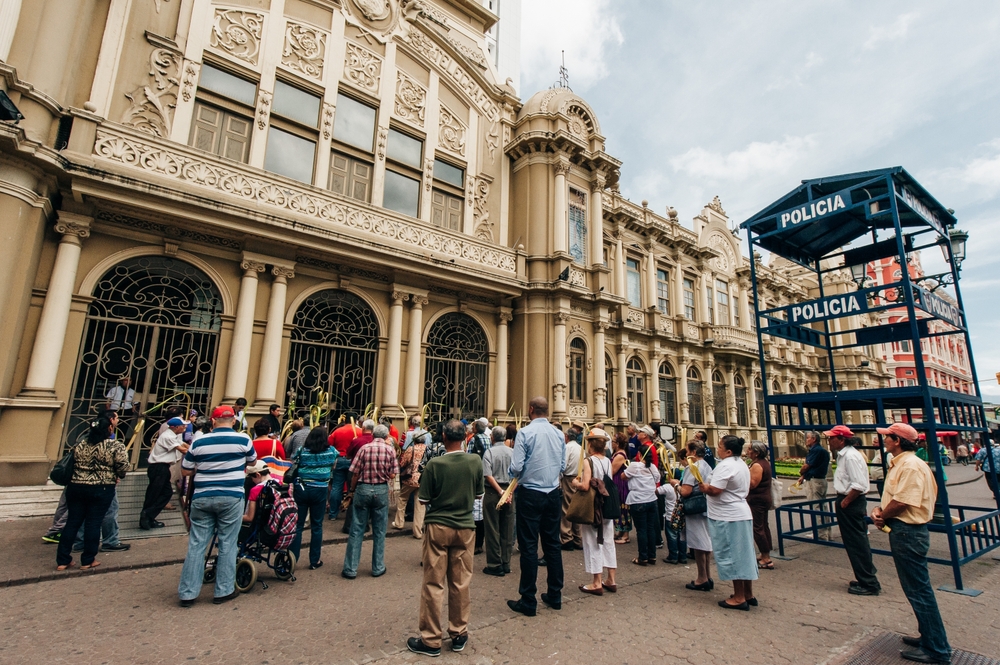In Costa Rica, there is only one other holiday on par with Christmas, and it's a celebration that can be felt around the country.
During one week each spring, Costa Ricans celebrate the biggest holiday on the Catholic calendar. Unlike in the United States, where Easter is celebrated on one day, with easter eggs and a bunny, Costa Ricans celebrate the entire holy week: Semana Santa.
Don’t forget to book your vacation rental in advance for this special (and busy) holiday period in Costa Rica.
In this guide, we'll explore the history and traditions of Semana Santa, plus our top tips on how to make the most of this important holiday.
What is the History of Semana Santa?
Photo Credit: Corrado Baratta
Semana Santa, or Holy Week, in Costa Rica is a deeply rooted tradition that blends Catholic religious practices with local culture, reflecting the country's Spanish colonial heritage.
The history of Semana Santa in Costa Rica dates back to the Spanish conquest in the 16th century when Catholicism was introduced to the indigenous populations. Over time, Costa Ricans adopted and adapted these religious traditions and customs, creating unique religious celebrations that continue today.
During colonial times, Spanish missionaries used religious processions and dramatic reenactments to teach the story of Christ's Passion, death, and resurrection to local communities. These traditions became annual events, growing in significance over the centuries.
Today, the week is marked by solemn religious processions where participants dress as biblical figures, carry religious icons, and reenact scenes from the Passion of Christ. Many towns, especially in regions with strong Catholic roots, hold elaborate events led by local churches.
What Are the Main Traditions of Semana Santa?
Photo Credit: Brester Irina
In Costa Rican culture, Semana Santa is a time for family, reflection, and rest. Traditionally, businesses and schools close during the latter part of the week, especially on Holy Thursday and Good Friday.
For Catholics, Semana Santa is an important holiday as they remember the life, death,
and the resurrection of Jesus Christ. In general, the entire Easter holiday is a much bigger
celebration in the Latin world than anywhere else.
People attend multiple masses and hold parades, and many countries celebrate Carnival forty days before Easter, as the last celebration before lent. Costa Ricans use the Holy Week to have special meals with their family, attend vigils and mass at church services, and attend parades.
You can see purple flags and decorations hanging from windows and doors of houses, as a way to remember the purple robe of Jesus Christ. Many towns host a parade in which they carry Jesus (in statue form or reenacted) on the cross through the town for all to see.
Food customs developed as well — traditional dishes like empanadas de chiverre (squash-filled pastries) are popular, and various seafood dishes became staples due to the religious practice of abstaining from red meat.
Over time, the religious focus of Semana Santa has blended with more modern traditions, such as beach vacations and community gatherings (more on that in a moment). Still, the spiritual aspect remains central for many Costa Ricans, with churches continuing to hold special Masses and processions throughout the week.
What Modern Traditions Do Costa Ricans Have During Semana Santa?
For many Costa Ricans, Semana Santa is the ultimate opportunity for an extended vacation. Most families from the city come to the beach for a week of family fun under the sun.
Most offices are closed on Thursday and Friday, and schools and many businesses take the whole week off. Nearby towns like Jacó and Herradura will be filled with local Costa Ricans enjoying the beach and restaurants.
Semana Santa also coincides with one of the warmest, driest weeks of the year, making for some hot weather and the perfect vacation week.
What Is The Weather Like During Semana Santa?
A little known fact about Easter Sunday is that it falls on the first Sunday after the first Full moon after the Spring Equinox. This is why Easter occurs on a different date each year, always in April and sometimes at the end of March.
In other parts of the world, this might not mean much. However, Costa Ricans are attuned to the changes in the weather and the wildlife around them. The first full moon after the Equinox often brings the first rain of the year, but don’t worry; this is usually a short rainfall at night after several months without any rain.
This is also a time when many species go through changes. Purple and orange mountain crabs can be seen crossing the road to get to the beach in the thousands. The return of the rain signifies a new season for plant growth and new generations of animals. Interestingly enough, this time of year is not only important to practicing Catholics but also to the local flora and fauna.
Not sure what to pack for your Costa Rica Easter week adventure? Check out our in-depth guide here.
What Happens on Each Day of the Holy Week?
Photo Credit: Brester Irina
As well as events in Los Sueños, nearby communities such as Jacó and Herradura offer various activities throughout the week. Here's a general outline of what you might expect during Semana Santa in the Los Sueños area:
- Palm Sunday (Domingo de Ramos): Local churches in nearby towns hold special Masses featuring the blessing of palm fronds, symbolizing Jesus' entry into Jerusalem.
- Monday to Wednesday: Religious activities continue with daily Masses and community gatherings in local churches.
- Holy Thursday (Jueves Santo): Commemorative Masses and processions in nearby towns like Jacó and Herradura reenact the Last Supper.
- Good Friday (Viernes Santo): Solemn processions depicting the Stations of the Cross take place in surrounding communities. Traditional abstention from meat leads to an emphasis on seafood dishes in local eateries, so take the opportunity to sample fresh fish dishes.
- Holy Saturday (Sábado Santo): Religious ceremonies and community events in Los Sueños and nearby towns continue.
- Easter Sunday (Domingo de Resurrección): Celebratory Masses marking the resurrection of Christ, as well as family gatherings and festive meals, are common.
How to Celebrate Semana Santa in Los Sueños
Celebrating Semana Santa (Holy Week) in Los Sueños, Costa Rica, offers a unique blend of religious traditions, cultural festivities, and leisure activities. Here's how you can immerse yourself in the experience:
Participate in Religious Observances
Semana Santa is a significant religious event in Costa Rica, marked by various ceremonies and processions. While Los Sueños itself may not host large-scale religious events, nearby towns such as Jacó and Herradura often organize processions reenacting the Passion of Christ. Attending these events provides insight into local customs and the country's deep-rooted Catholic heritage.
Engage in Resort Activities
Los Sueños resorts typically offer special events and promotions during Semana Santa. Past activities at key resorts have included themed dining experiences and family-friendly events. It's advisable to check each resort's events calendar or contact the concierge for the latest information.
Explore Marina Village Festivities
Marina Village at Los Sueños often hosts various events throughout the year, including live music and cultural celebrations. During Semana Santa, the village may feature special performances or festivals that showcase Costa Rican culture. Visiting the village during this time can offer a festive atmosphere with dining and entertainment options.
Plan Outdoor Adventures
Semana Santa coincides with one of Costa Rica's warmest and driest periods, making it ideal for outdoor activities. Consider booking excursions such as sport fishing, canopy zipline tours, ATV adventures, or surfing lessons. Given the holiday's popularity, reserving these activities in advance is recommended to ensure availability.
Experience Local Cuisine
Traditional foods are an integral part of Semana Santa celebrations. Look for local eateries serving seasonal dishes like chiverre (a type of squash), desserts, and seafood specialties like fried fish, reflecting the customary abstention from red meat during this period. Exploring local markets and restaurants can provide a delightful culinary experience.
Be Mindful of Crowds and Reservations
Nearly every town in Costa Rica has a Catholic church. And did you know? These churches are always built facing west. During Semana Santa, multiple masses are held each day. The biggest Semana Santa procession usually takes place on Good Friday, the Friday before Easter. You might feel an extra air of celebration as you arrive in Los Sueños, and you may notice that most tourists are, in fact, Costa Ricans enjoying the holiday.
Semana Santa is one of Costa Rica's busiest travel periods, with locals and tourists flocking to coastal areas. Expect increased crowds, especially at popular beaches and attractions. To ensure a smooth experience, make dining and activity reservations well in advance and plan for potential traffic delays.
This can mean that you'll experience a few crowded beaches, but we recommend embracing the busy atmosphere and celebrating like a Costa Rican with good food and drink, surrounded by family and friends in the warm sunshine.
HRG Vacations & Rentals Provide the Perfect Place to Stay for Santa Semana
By embracing the local traditions and planning accordingly, you can enjoy a memorable Semana Santa in Los Sueños, experiencing the rich cultural tapestry and natural beauty that Costa Rica offers.
Here at HRG Vacations and Rentals, we would be happy to host you during the Easter festivities. Whether you're heading down for a long weekend to try some traditional foods or the entire week to soak up the delightful weather, you'll be glad you chose to book your stay with us.



